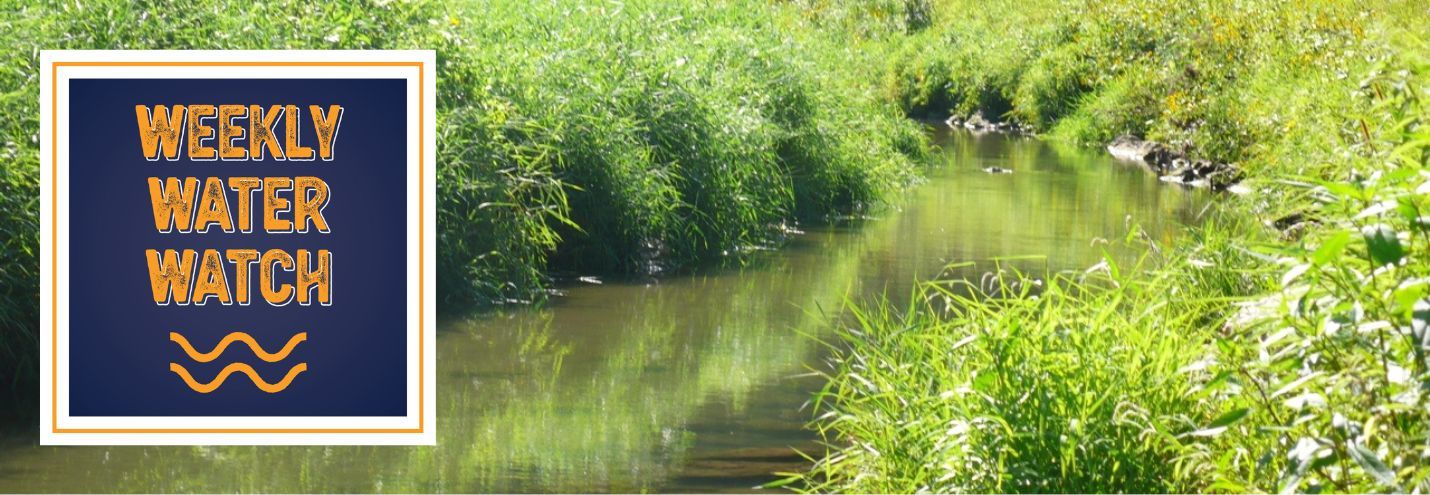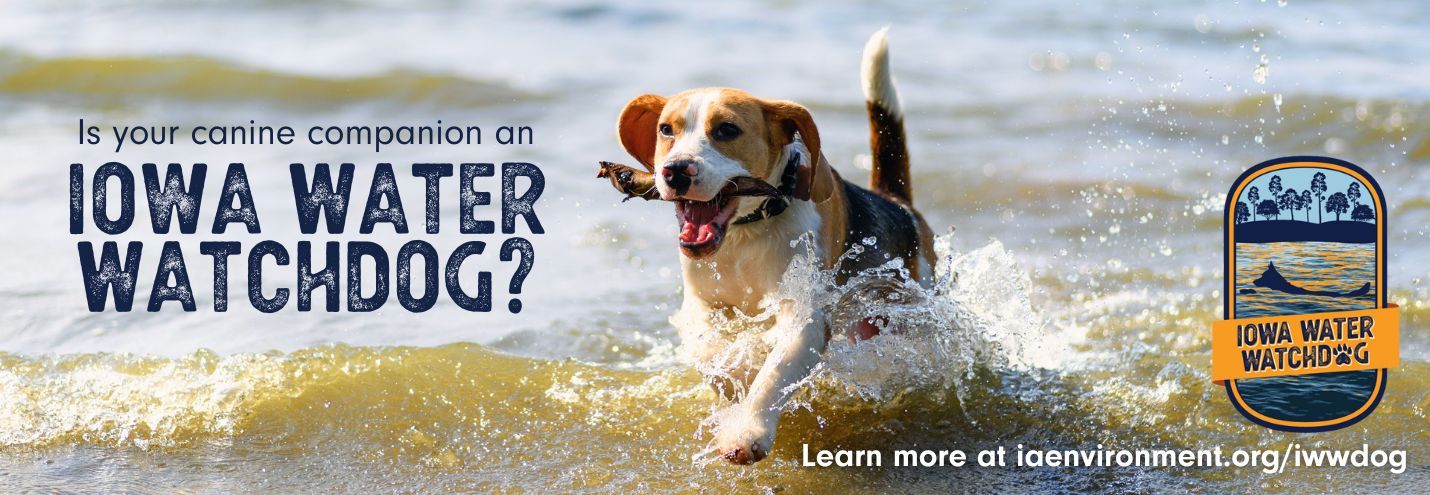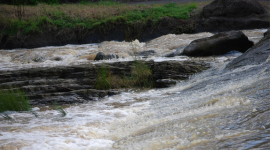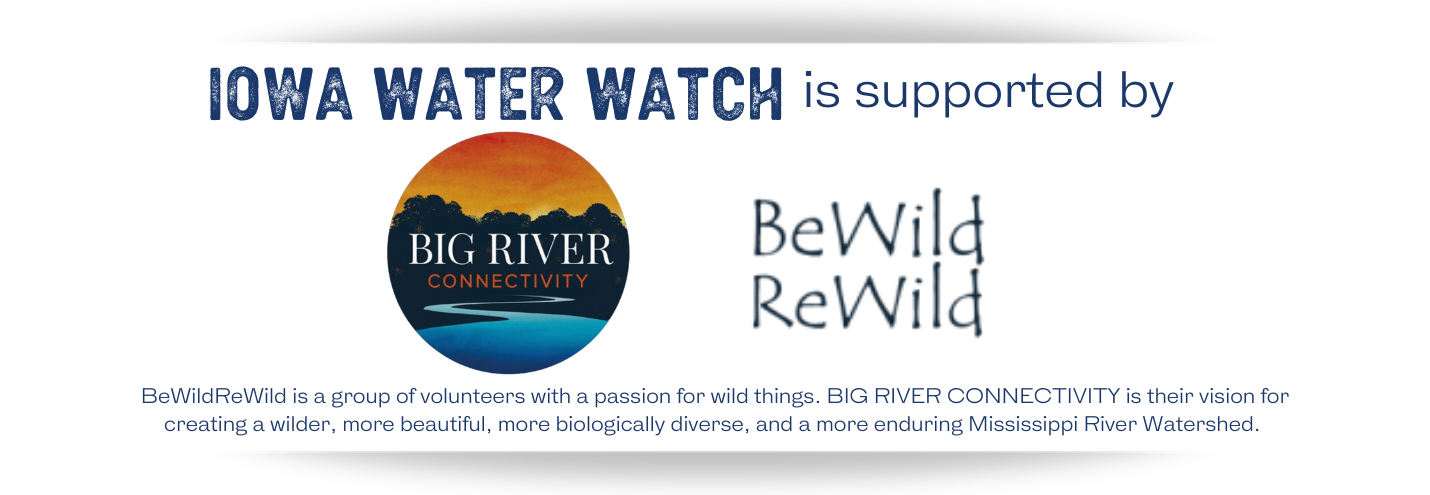|  | | 6 Beaches with an E. coli Advisory: Backbone Beach (Dundee, Delaware County, IA)*
Beed’s Lake Beach (Hampton, Franklin County, IA)*
Black Hawk Beach (Lake View, Sac County, IA)*
Lake of Three Fires Beach (Bedford, Taylor County, IA)*
Lower Pine Lake Beach (Eldora, Hardin County, IA)*
Union Grove Beach (Gladbrook, Tama County, IA)* 2 Beaches with a Microcystin Advisory:
Lake Darling Beach (Brighton, Washington County, IA)*
McIntosh Woods Beach (Clear Lake, Ventura, Cerro Gordo County, IA)* 7 City and County Beaches exceed the state’s advisory threshold for E. coli.*
View the map on our website to see where they are. Note: Due to flooding and high waters, the following beaches were not tested: Saylorville’s Oak Grove Beach, Crandalls Beach, Marble Beach, Orleans City Beach, Triboji Beach, Pikes Point Beach, Gull Point Beach, and Emerson Bay Beach. *Data from the Iowa DNR State Park Beach Monitoring Program |
| Western Iowa Hit by Unprecedented Flooding |
| In Iowa, Minnesota, and South Dakota, heavy rainfall late last week inundated communities with floodwaters. Entire communities are still under water, and many residents were forced to evacuate. High water backed up sewage systems, power lines went down, and streets became unnavigable. On Saturday, Governor Reynolds announced a disaster proclamation for 21 counties, stating that the Iowa Department of Natural Resources (IDNR) has conducted over 250 water rescues. Additionally, President Biden issued a disaster declaration on Monday for several northwestern counties. These formal disaster declarations make state and federal funding available for costs associated with relocation and rebuilding, including temporary housing, home repairs, business recovery loans, and debris removal. In communities like Rock Valley and Sioux City, infrastructure failure became a key concern. Among the most impacted, Rock Valley in northwestern Iowa received over 15 inches of rain, cresting the Rock River at 27 feet. At the time, it was believed that the Rock River, coursing directly through Rock Valley, had a levee failure. The town has since released information that the levee did not fail, rather, the flooding was simply too high to contain. Along the Big Sioux and Little Sioux Rivers, rural areas and towns are also suffering from similar issues. Levees on both rivers were breached. Along the Big Sioux River, a BNSF railroad bridge collapsed on Sunday. Flood damage to northwestern Iowan MidAmerican substations and transmission lines interrupted power availability. MidAmerican has since released a statement that temporary mobile substations were deployed and power has mostly been restored. Downstream communities are preparing for flood waters. In Des Moines, the Army Corps of Engineers closed some areas of Saylorville Lake. The Department of Transportation closed portions of I-29 and I-680 near Council Bluffs. Even eastern Iowan communities, like Cedar Rapids, are carefully monitoring local rivers’ flood stages as this past week brought more rain to the area. Flash floods are increasing in frequency and severity. The warming climate causes more water to evaporate from waterways and soil. At these higher temperatures, the Earth’s atmosphere also retains more moisture, which can lead to an increase in precipitation. IEC’s most recent publication Drought and Iowa Drinking Water discussed the need for statewide planning for the consequences of drought. Iowa recently emerged from a prolonged four-year drought, which made the ground and waterways abnormally susceptible to flooding. This, coupled with the severity of rainfall and infrastructure failure, led to mass flooding throughout northwestern Iowa. If you have been impacted by recent flooding, we encourage you to seek resources provided by the state and federal disaster relief programs. Information on Individual Disaster Assistance can be found on the Iowa Homeland Security and Emergency Management website or through FEMA. |
| |
|
| |  | |  | Celebrating Pride & Environmental Stewardship in Iowa If you were to ask someone from another part of the country about their perceptions of Iowa, it is likely that a history of LGBTQ+ rights and environmental leadership wouldn’t make the top of their list. However, for a small state in the heart of the country, Iowa has an impressive history of leadership in both—even if our state has failed to live up to that legacy in recent times. Iowa has a long way to go to reclaim its title as a leader on LGBTQ+ rights and environmental stewardship. We believe celebrating Pride is key to reclaiming Iowa’s legacy of environmental stewardship because Pride is, at its core, about expressing identity and finding courage and dignity in those identities. It is because of identity that some communities have not had equal and equitable involvement in the crafting of environmental regulations, law, and policy. When there is true leadership on environmental justice, all people and communities regardless of race, gender identity, sexual orientation, income, or other historically marginalized identities have the right to the same environmental protections and benefits and have meaningful involvement in shaping the policies that provide those protections and benefits. As we celebrate Pride month and seek to build an environment that is more inclusive, more accessible, and more sustainable for all Iowans, IEC reaffirms its commitment to LGBTQ+ rights and environmental justice. This piece comes from IEC's Senior Policy Advocate Cody Smith. Read the entire blog on our website! |
|
|
 | How the Climate Crises Impacts Homeowners Insurance Amid the recent climate crises throughout the Midwest and the rest of the country, insurance companies are starting to adjust their coverages and rates as climate disasters become more frequent and costly. In states like California, suffering from persistent wildfires, and Florida, hit by recurring hurricanes, homeowners have difficulty finding coverage for their homes. In other instances, insurance premiums climb to unaffordable rates. This has led homeowners to utilize state-held "last-resort" insurance plans, burdening the public market. Andrew Bates, a State Advocacy Coordinator at Fahe focused on equitable housing in Appalachia, states “Rising flood insurance premiums due to increased risk are really threatening to hinder our ability to deliver affordable housing to those in need." Advocacy groups like Fahe urge state and federal governments to create better floodplain maps to assess future risks, while recommending nature-based climate mitigation strategies, such as wetland restoration. In Iowa, we are only beginning to see the impacts of climate change on insurance rates. It begs the question: should we stay put in disaster-prone homes, or move to safer places? There is no area immune to the threat of climate change, just as there is no avoiding the risk of a tornado or derecho in Iowa, but how can we consider our future in areas repeatedly hit by floods, wildfires, or unbearable heat? The answer may come from insurance providers - we won't be able to afford it. | |
|
|
 | Flooding, Waste, & Water Quality Flooding in northwest Iowa is impacting recreational water quality and drinking water systems. Local reports from the Iowa Great Lakes indicate that a large harmful algae bloom may be forming in West Okoboji Lake, as well as pockets of harmful algae along the shoreline and in stagnant flooded areas. Officials with the Iowa Department of Natural Resources advise Iowans to stay out of flooded areas, including beaches and streams. Flooding has also caused wastewater discharges and manure storage overflows in the area. This is a big concern in an area that has a high concentration of animal feeding operations (AFOs). Food & Water Watch estimates that the five counties that received a federal disaster declaration are home to over 900 AFOs that produce 23.6 billion pounds of manure each year. Overflowing manure storage pits contaminate floodwaters and waterways with feces and urine that contain bacteria, viruses, and nitrate that are harmful to human health. Heavy rainfall has also overwhelmed wastewater collection systems and sewers, leading to the backups in basements and discharges to streams. Officials in at least two communities, Rock Rapids and George, say drinking water systems there are contaminated with bacteria and high nitrate levels. They are telling residents to use bottled water or find alternative sources of water. As conditions continue to change, stay safe! When it comes to recreational water quality, if in doubt, stay out. |
|
|
| |  | | What's new in Iowa's water news: |
|
|
| | |  | | | Iowa Environmental Council
505 Fifth Ave., Suite 850
Des Moines, Iowa 50309-2317
515-244-1194 | iecmail@iaenvironment.org |
|
|
|
|
|